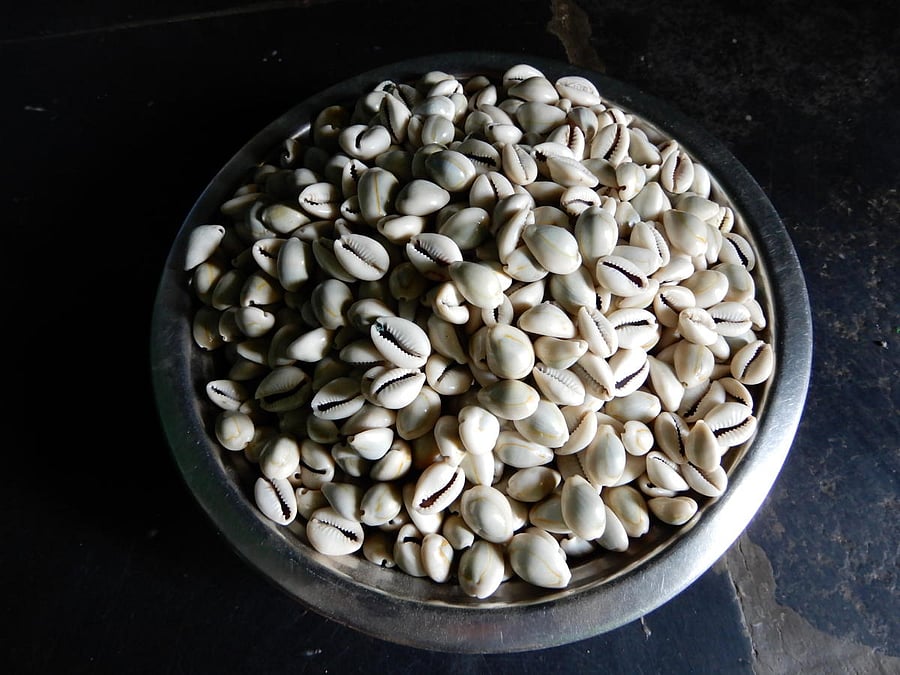
People who were born before the 1960s were part of a generation that grew up without televisions, computers, the internet and cell phones to amuse themselves. That space, among other things, was filled by traditional games that brought different generations of family, friends and community together.
The thrills of rolling dice and clinking of shells brought the grandparents down to the floor, and made cheering aunts join the novice younger lot.
That was a time which regularly witnessed inter-generation matches of ‘choukabhaara’, ‘pagade’, ‘aligulimane’, ‘aanikallu’, ‘huli-kuri aata’, ‘kavade’ and such other indoor games.
Overall development
Today, few families can pride themselves about providing common platforms to all the age groups with such
wholesome entertainment. Yet, these games do not stop at just entertainment, they also happen to be equally wonderful sources of learning and development.
They contribute tremendously towards cognitive, emotional, moral and social developments, that take place during childhood.
For instance, these gains help to stimulate different lobes of the brain responsible for various cognitive and socio-emotional developmental areas such as movement, orientation, recognition, reasoning, planning, and problem-solving.
Similarly, they can also help teach essential life skills and help in emotional development as these games can help kids learn humility in defeat and victory. Repeated playing can demonstrate to children the fact that there is never a constant victor and that the effort has to go on, for tomorrow can be a complete surprise.
Perhaps progressive schools and involved parents could consider the integration of these games. The spin-offs include multidimensional learning approaches which provide learners visual, tactile and kinaesthetic experiences. Here’s how to play a few of these traditional games:
Aanikallu (five stones): It is a simple game involving two to five players. To play, four stones are thrown on the ground while the fifth one is tossed up and by the time it lands back into the player’s hand, they should pick one more stone from the lying four and progressively increase the number of stones to be picked up in different permutations and combinations. This game is beneficial in the development of visuomotor skills like eye-hand coordination and object control, and numeracy skills.
Kavade (cowrie or shells): This is usually played with four cowries or shells and is a game for two or more players. First, all the four shells are tossed up and they have to be balanced on the back of the palm. Then the shells are rolled on the ground. Their different combinations denote numbers and the player has to further score points by hitting one shell to the other. This helps refine visuospatial skills, temporal skills, numeracy skills, fine motor movement and attention.
Choukabhaara (Indian ludo): Two to four players play this game with four to six pawns each on a rectangular board marked with three or four tiers dependent on whether it is a 5x5 or 7x7 matrix. As per the count on the shells, the player moves the pawns from the starting point and each one starts at a junction at the outermost tier. For a player to enter the inner squares, it is necessary to kill an opponent’s pawn through the throw of the shells.
Eventually, a player wins the game when all their pawns are in the innermost crossed square. This game greatly aids the learning of numeracy skills, fine motor movement, improves concentration, strategising, prioritising and decision-making.
Pagade: Two to four players play this game with a spread plus-shaped cloth, with the centre being the victory square, and two elongated dice. Each player has one arm of the ‘plus’ with four players and two if there are two players. The players should evade the opponent’s onslaughts and reach the victor’s square at the centre. This game is an advanced version of chowkabhara and helps develop strategising and prioritising skills.
Huli-kuri aata: This game is played with two players. It involves an attacking set of three predators held by one player and a set of seven to 15 prey that the other player holds.
While the predators try to eliminate the prey, the latter attempts to block the former by surrounding them. The prey has to stay united to win. The game ends when all the predators are immobilised or all but one prey are eliminated from the board. This game helps strategise and promotes the spirit of team work.
(Manjula is professor, department of psychology, CHRIST and Smitha is a freelancer)
